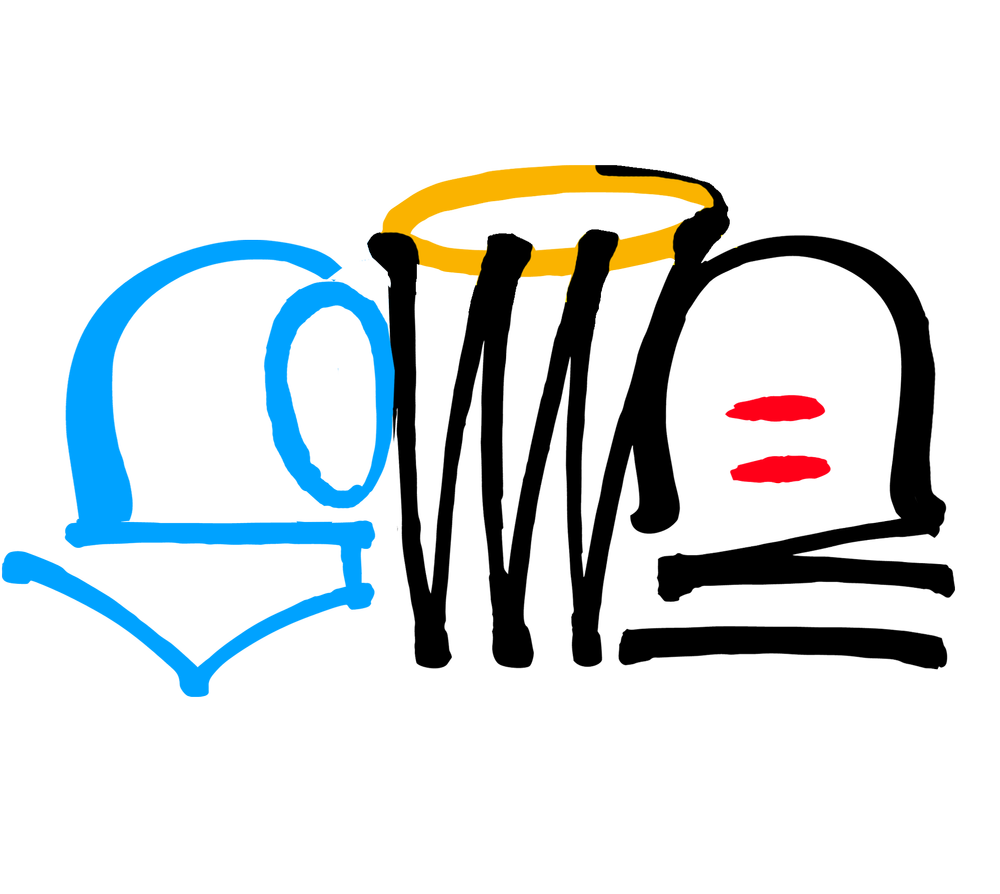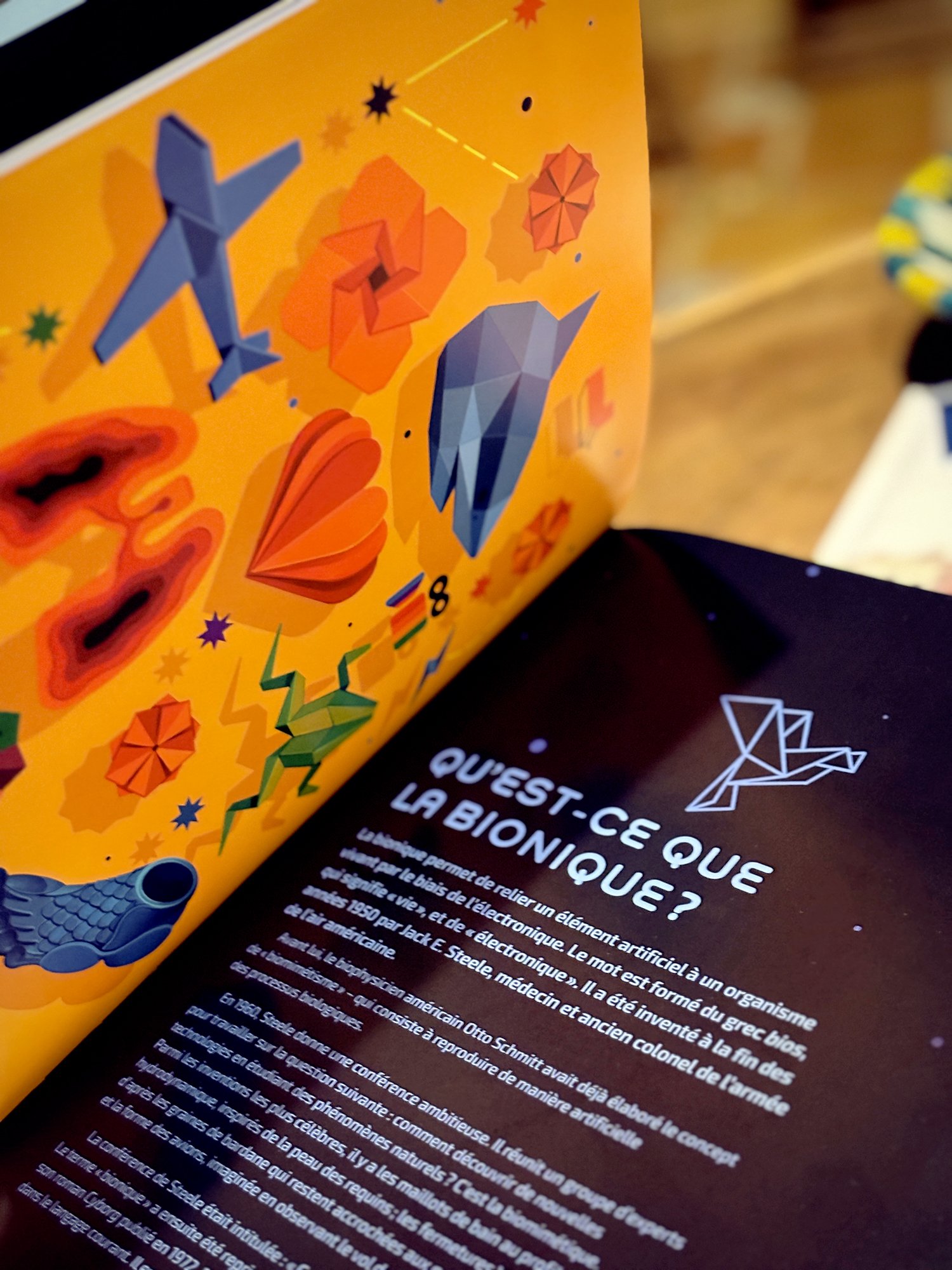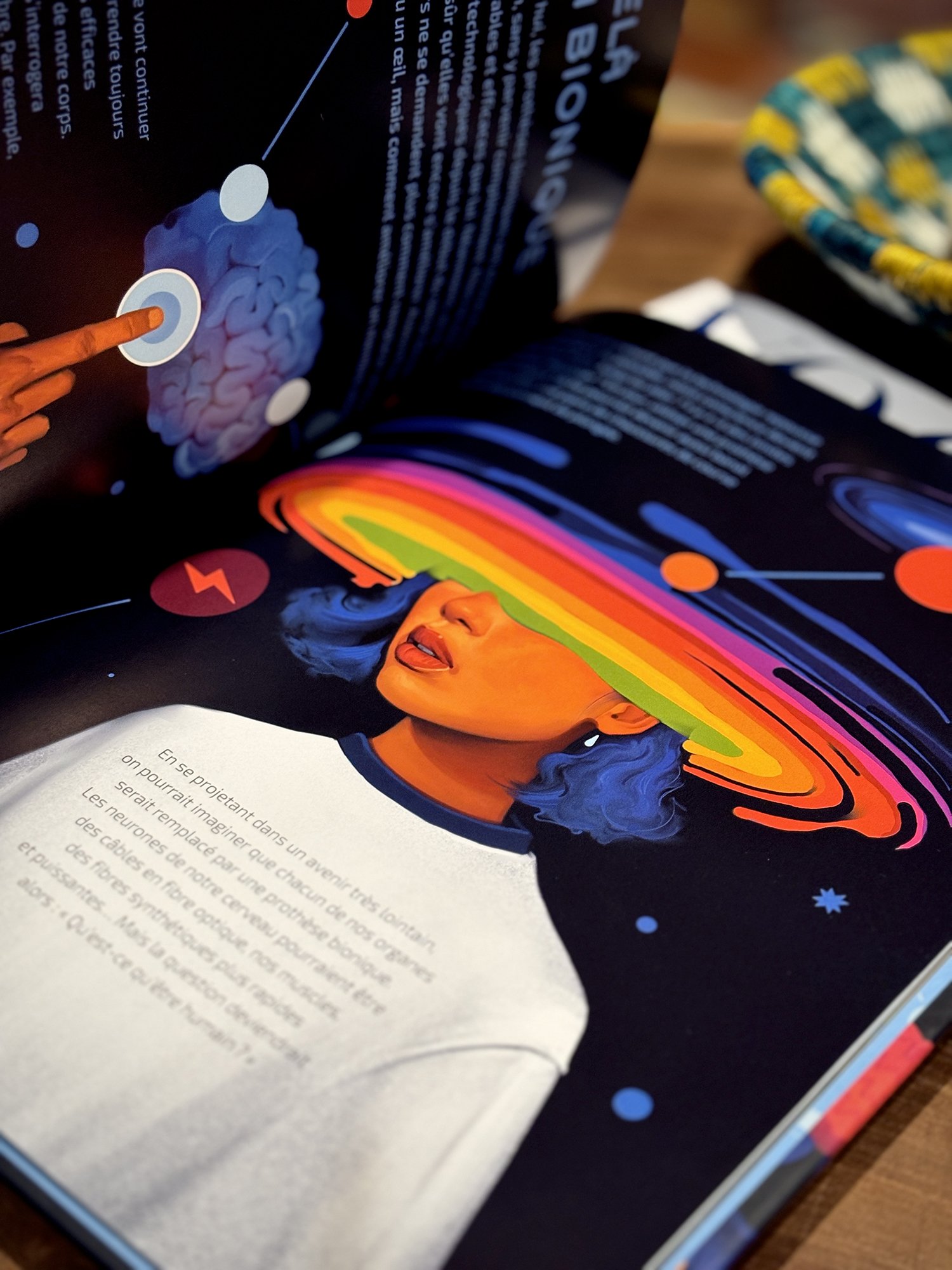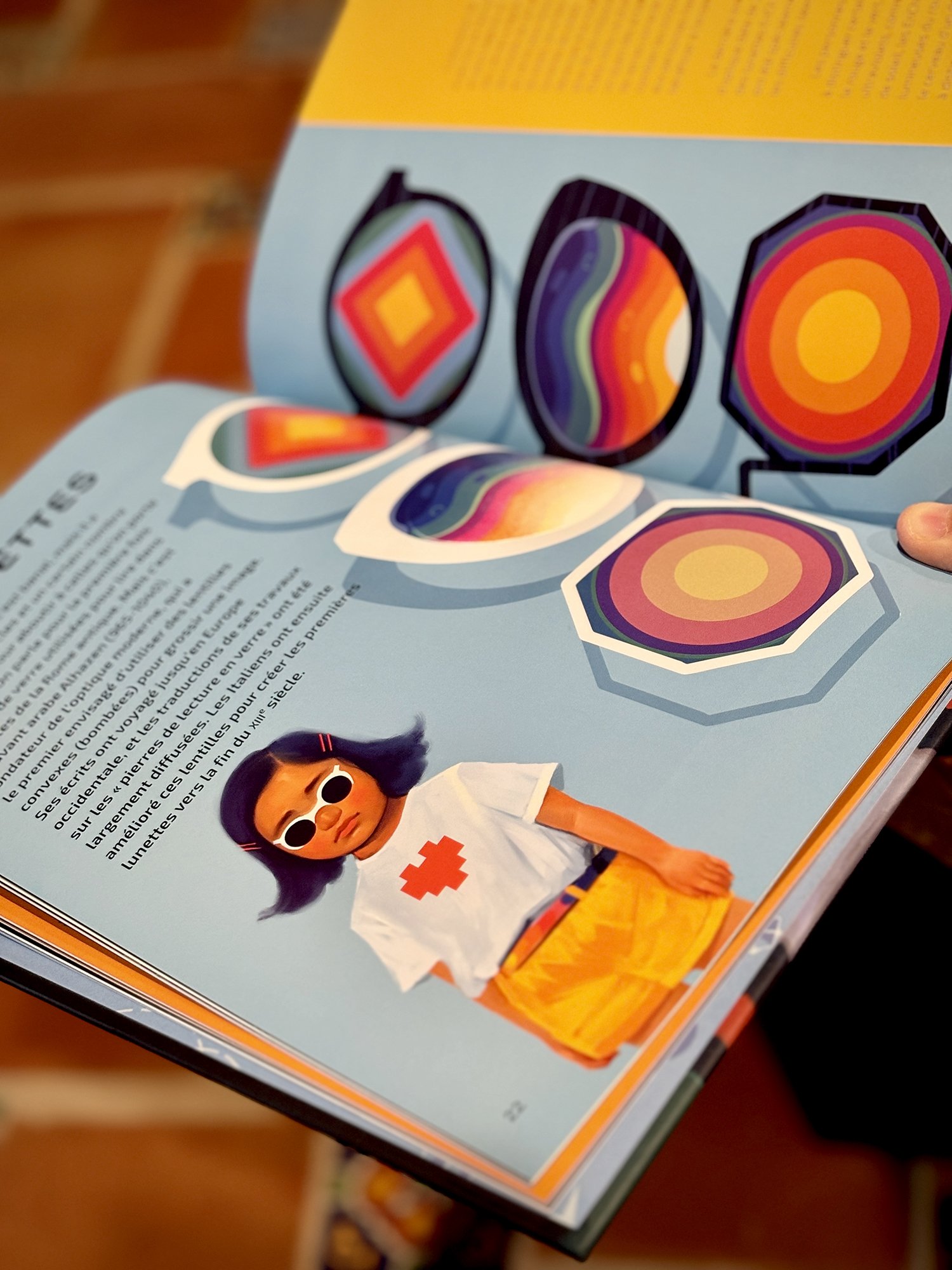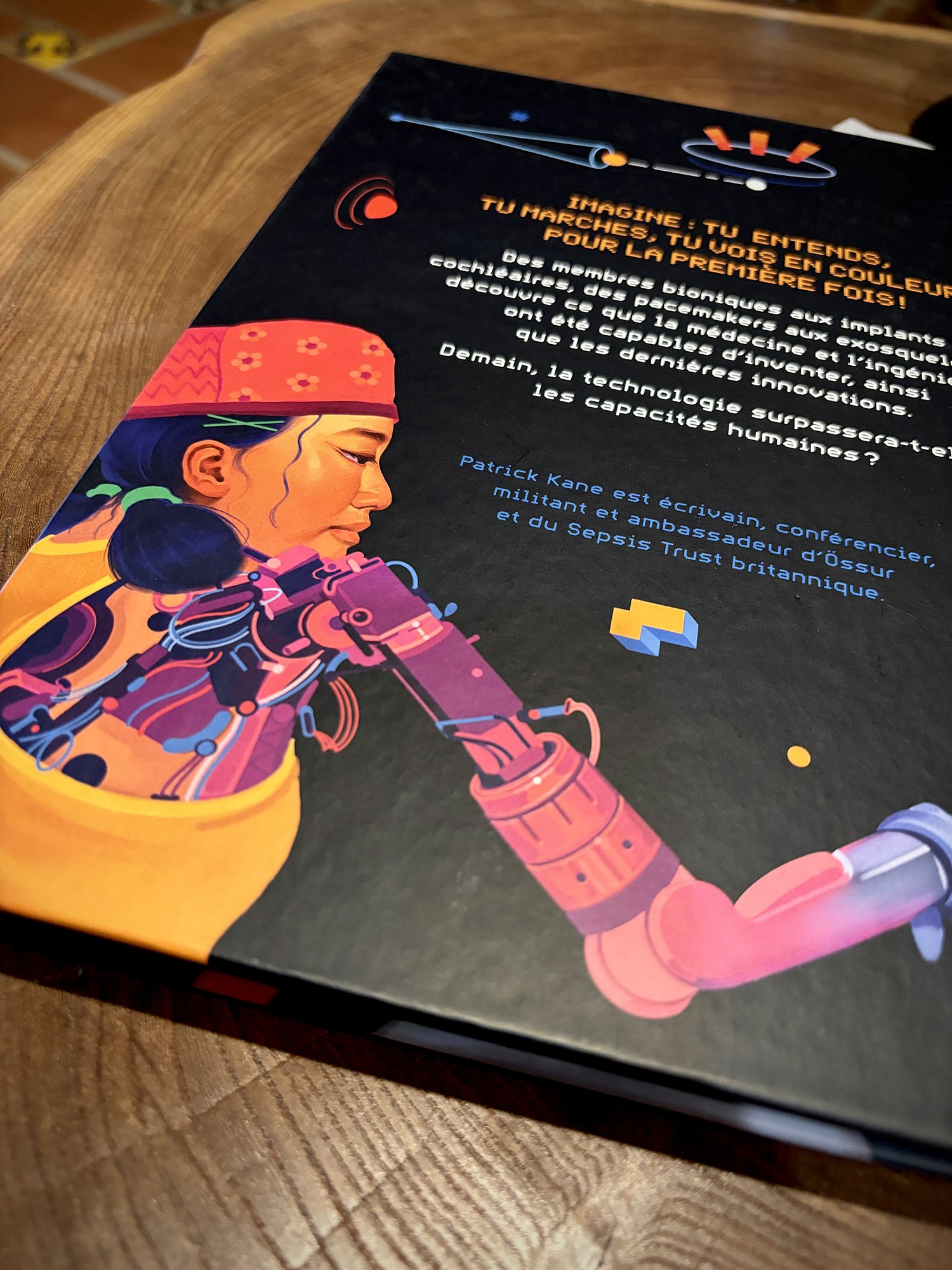Illustration I made of Enuma Okoro for M&K magazine (Switzerland).
Coco Gauff
Portrait of tennis player Coco Gauff for Sports Illustrated Kids. She’ll be representing the US in the 2024 Paris Olympics.
Pool Chair Etiquette
Made this comical illustration for Washington Post about Pool Chair Etiquette and other chaos.
Colossal Art
“Frenzied Symbols and Vibrant Vignettes Overlay Sam Rodriguez’s Figurative Illustrations.” That is what the good people at Colossal Art had to say in a write up they did about my work. You can view the article and feature here: https://www.thisiscolossal.com/2024/05/sam-rodriguez-illustrations/
Traveler
New piece about the journey of seeing.
Subway Selfie
An illustration exploring one of many dualities at the moment (year 2024).
Sky Walker
New work: ‘Sky Walker’
Human 2.0 (French Edition)
Just received the French edition of our book. Published by Editions Milan. This book titled Human 2.0 was originally published in English by Big Picture Press in the United Kingdom. I illustrated the entire book which was written by Patrick Kane. This incredible book celebrates the remarkable achievements made in medical engineering, and offers a glimpse of what the future might hold for humanity.
Sisters
A contemporary family portrait commissioned by the Locquiao family.
+ Click images for detailed look. +
How to Become a Freelance Illustrator
I recently received an email from a former student who graduated as an illustration major. He mentioned that he’s been having a tough time finding work and asked me for advice on how to break into the industry. Although nothing in life is guaranteed, here are some tips I shared with him that should put anyone in a position to get a full time career as an illustrator. Warning: you’ll need to put in lots of work!
So…how does one become an illustrator?
1. Identify yourself as an illustrator.
Start by saying to yourself, I’m a professional illustrator! After you self-identify as one, you’ll need to prove it and make illustrations.
2. Find your voice.
It’s true that in the beginning you don’t have clients but that shouldn’t stop you from attempting to make professional grade work. Act the part. This is easier said than done, but you need to see what other illustrators are saying with their work and figure out where there are voids that can be filled with your voice. I’ll give you a hint, without your personal touch, there is always a void. Think about what specific styles of graphic arts you enjoy (portraits, figures, typography, etc.), mix the recipe together and that’s you. Make it even more distinct by adding things you identify with (comics, food, sports, ethnic culture, etc.).
3. Master your style.
As if finding your voice wasn’t hard enough, now you’ve got to master it? Damn! It’s true, being a student at school (or youtube), is easier than being a pro because you're constantly learning from other masters so there’s a clear direction. However, when you’re in the process of creating your own voice, there’s no roadmap. One thing I don’t see mentioned that often is the learning curve to getting good at your own thing. When I finally landed on an approach that I could call my own I was hyped until I realized that my pieces were very undercooked. This is because it was unchartered territory for me and the experimental phase can be filled with so many technical blind spots. Don’t be discouraged because this is the path to originality and in fact I wish I would have spent more time embracing this ‘ugly stage’ of my career.
4. Say something.
So you think you're cool because you have your own style? So what? Actually this is going to be where things get fun! Once you’ve mastered your own thing, you can begin pressing buttons and pulling levers any which way that you please. You can receive any prompt, or brief and approach it from your way of visual communication because now it’s become your natural way of expression. The more you practice the easier things get because your process becomes a habit. If by this time, you still don’t have clients, make some self-assigned projects. You can tell your own stories and from my personal experience these are the pieces that are most referenced by clients when they give me project briefs. In other words, sometimes your personal work is the direction for incoming assignments.
5. Publish your portfolio.
So you’ve spent all this time generating a portfolio, what a privilege! Now it’s time to put it out into the world through print and online. A personal website first and social media to follow. Your own website/newsletter should be the main focus of your online presence. Some social media sites might not be around in the future and they’re so volatile.
6. Make a list and reach out.
Now that you’ve got a portfolio, make a list of areas in the industry you want to show it to. I understand if you envision your work everywhere but in the beginning try to narrow it down as much as possible. From there it will be easier to find specific agencies, publishers, and art directors to share with. Before doing so, I highly recommend that you follow them and contact ones that you’re actually a fan of because chances are you’ll both have a lot in common. Your outreach is about quality, not quantity. The early stages of your career should be about building your business.
Take the time and care to get to know the people you’re contacting so you’ll have things to share that might peak their interest. The student who contacted me lives in New York City, so they have the golden opportunity to do meet ups in person since that’s where a large part of our industry is located. This could be something like attending events, portfolio reviews, or scheduling introduction meetings. In person is always better, second would be zoom or phone call, and email last. I don’t dm.
7. Introduction meetings.
This is something I didn't realize was so important until later. Sometimes clients want to get to know you for future reference or potential projects. Beyond cool images, it’s important to be compatible at work. Also new ideas might arise as introduction meetings can morph into brainstorms. It’s good to be on people’s radar because you’ll never know when a project pops up that you might fit.
8. Internships & part-time work.
One thing I would have tried if I knew more about it when I was barely starting out was internships. I think they’re so valuable for work experience but also for teaching the mechanics of the industry. An example would be if you’re interested in books, you could try to find an internship or part-time job at a publishing company even if it’s not directly related to the role of an illustrator. The colleagues you meet will eventually discover that you’re an illustrator and might become future contacts for work as your career develops. That work experience will also give you perspective from the client's point of view which will make you a stronger illustrator.
9. Get work.
Finding work is not a straight line. You need to diversify your approach, and my true hustlers know what I’m talking about. There’s so many ways to do this but in all the ways you attempt, make sure to do it with love and sincerity.
It doesn’t matter if it’s a commission for your cousin’s church, a pro-bono for a non-profit, in the beginning you should always have work. You might not be able to pay bills with it yet, but these types of jobs are your master class in illustration. They help you develop a practical approach and allow you to make mistakes so that when you eventually do land high profile clients you will have created professional habits. Before you know it you’ll be doing this as a full time job. I know all that I mentioned is not easy but if it were everyone would do it. The good news is that you’ll never be bored. I don’t know any illustrators who aren’t hard working, or eager for opportunities so if you’re someone with a strong work ethic you should be good. I love being a freelancer and a small business owner. It takes discipline and self-control to achieve it but just know that everything comes at a cost, even a comfortable job.
10. Bonus
Helpful sites I use to publish my work online.
Personal Website: Squarespace
Social Media: Instagram, X, Linkedin, Dribbble, Pinterest, YouTube, Behance, Threads
